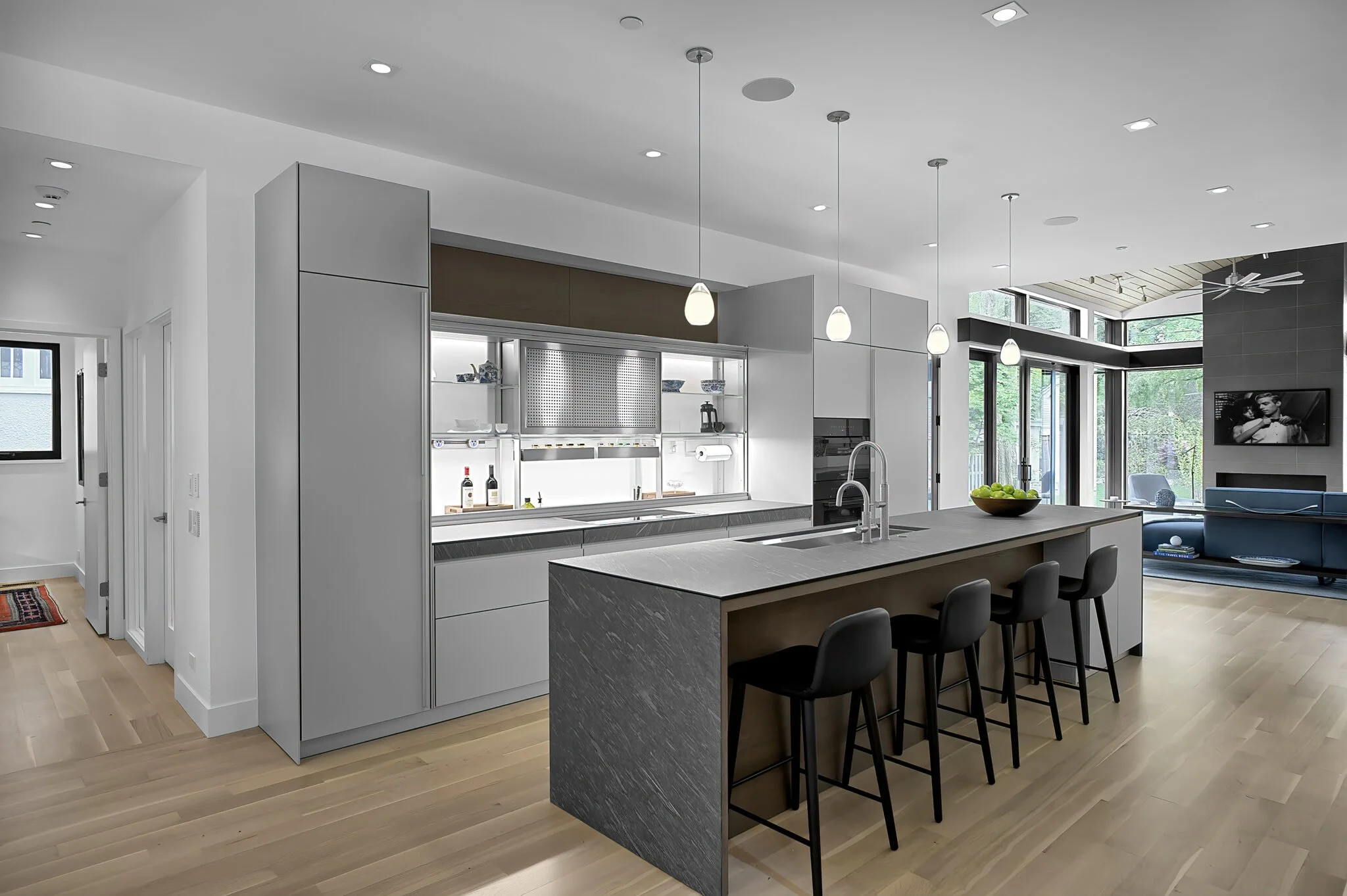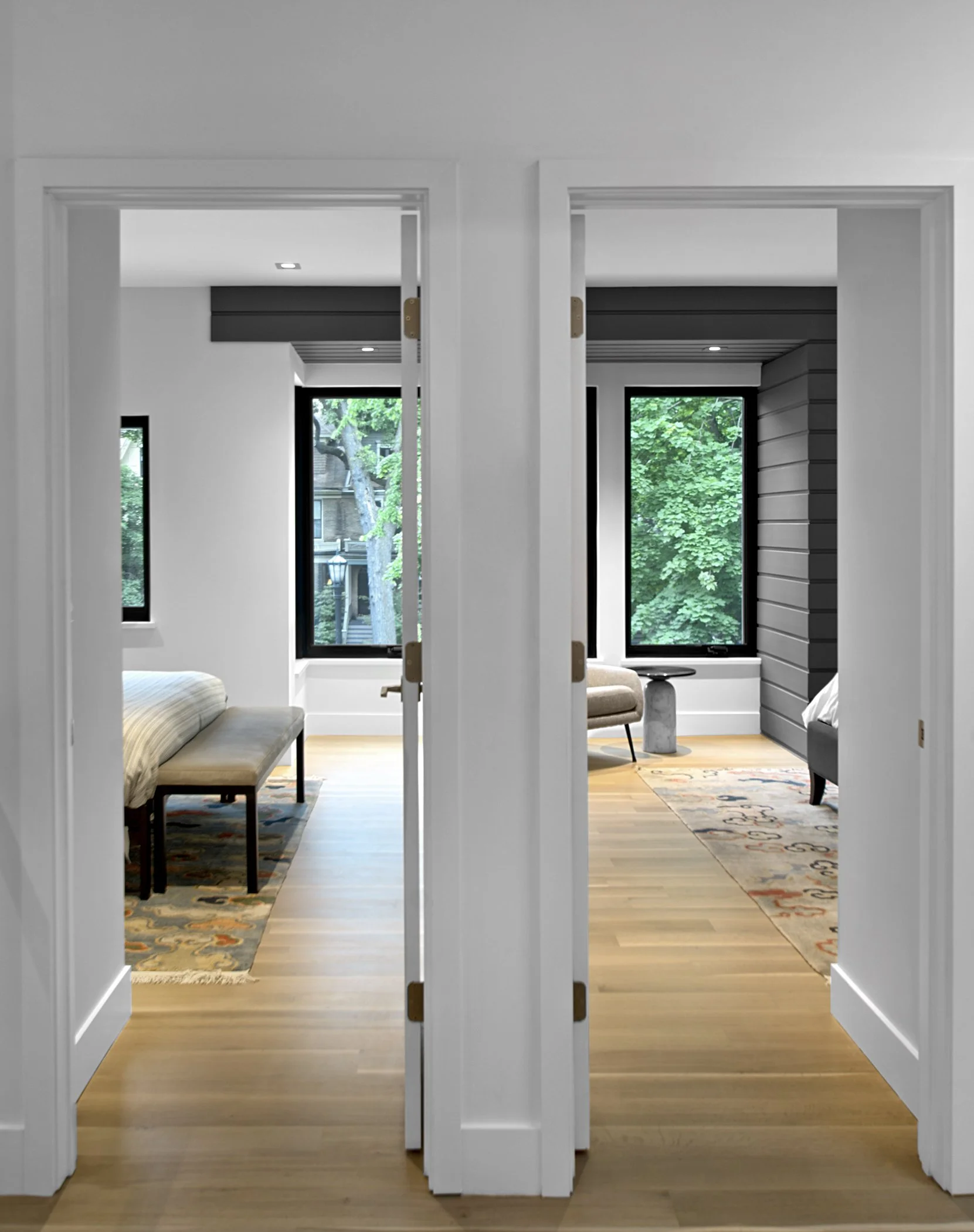Future-Proofing Luxury Homes with High Design and Low Carbon Impact
Already this summer, devastating floods have swept across Texas Hill Country and much of the Midwest, submerging entire neighborhoods and crippling local infrastructure. It’s yet another stark reminder that the climate crisis is no longer an abstraction — it’s an architectural challenge. For luxury homeowners, the stakes are high: the home is not only a financial investment but a sanctuary, a personal statement, and, increasingly, a line of defense.
This is where the work of NextHaus Alliance becomes both visionary and urgent. Based in Chicago, the Alliance is a multidisciplinary collective of design and construction professionals who specialize in high-design, low-carbon homes built to endure the accelerating pace of environmental change. For NextHaus, luxury is not just about aesthetics; it’s about foresight, performance, and peace of mind.
“Sustainability and resilience are often treated like parallel conversations,” says Nate Kipnis, NextHaus Founder and Principal of Kipnis Architecture + Planning. “But in reality, they overlap significantly. One supports the other. You can’t really talk about a sustainable home if it isn’t resilient to climate pressures.”
Redefining Luxury Through Performance and Permanence
In design circles, sustainability is a familiar ambition: reduce emissions, minimize environmental impact, improve air and material quality. But resiliency — a home’s capacity to respond to extreme weather, energy disruptions, or long-term environmental shifts — is still widely misunderstood. Kipnis likens it to a “Venn diagram,” where the intersection of sustainability and resilience forms the sweet spot of smart, future-facing design.
This convergence isn’t hypothetical. It’s playing out on real properties, with real stakes. A recent NextHaus project — one of the few PHIUS+ and PHIUS ZERO certified Passive Houses in Illinois — exemplifies this integrated approach. Designed and constructed to a standard far beyond building code, the home quietly counters the chaos of the outside world: its envelope is airtight, its insulation profound, its mechanical systems ultra-efficient.
“We never set out to ‘get a certification’ — we just did everything right,” Kipnis says. “And the house earned it. That’s what Passive House is about: exceptional performance, every day, under any condition.”
Windows, typically the weakest link in an energy envelope, were elevated with Sierra Pacific’s triple-glazed, low-E coated units, delivering not only thermal integrity but clarity and character suited to high-end architectural detailing. “Sierra Pacific has been a phenomenal partner,” Kipnis says. “We’ve used their windows in multiple projects because they give us the design freedom we want without sacrificing performance.”
Efficiency as an Aesthetic Experience
For a long time, the assumption in luxury architecture was that energy efficiency required aesthetic compromise. The NextHaus team has made it their mission to prove otherwise. With a design philosophy that draws as much from regional vernacular as it does from cutting-edge engineering, they create homes where beauty and performance are indistinguishable.
“The word ‘architecture’ itself contains both art and technology,” Kipnis explains. “It’s about the fusion of form and function. You can’t choose just one — especially not in the upper tier of the market. That’s where we excel.”
Design moves that enhance efficiency, such as deep overhangs, optimized solar orientation, and light shelves, become sculptural elements. Carefully planned solar alignment can illuminate a cherished art piece or a hallway on a specific birthday, drawing a straight line between ancient observatories and modern-day personalization. This is not just performance; it’s architecture as poetry.
Beyond the visual drama lies a level of precision that’s almost invisible. For example, all systems in the NextHaus Passive House are integrated with Savant, a top-tier smart home automation system that empowers homeowners to control lighting, climate, shading, and energy consumption with effortless precision.
“With Savant, it’s not just about convenience,” Kipnis says. “It’s about optimizing performance. We’re giving clients the ability to fine-tune their environment in ways that are intuitive, elegant, and deeply empowering.”
Building for What’s Next
While sustainability tends to dominate the public conversation, resilience is the quieter force that ultimately protects a home and its inhabitants from disruption. For Scott Berliant, NextHaus Alliance member and Principal at Berliant Builders Inc., resilience starts with location and risk analysis. In Chicago, that might mean reinforcing for wind or elevating foundations above flood-prone grades. In Colorado, it’s wildfire mitigation. In California, seismic stability.
“Resilience starts with understanding the site,” Berliant says. “As a luxury home builder, the first step is to understand fire, flood, seismic, and infrastructure vulnerabilities. That risk profile shapes everything that follows. We begin a NextHaus project by asking, ‘What is nature going to throw at this site?’ — not just today, but 30 years from now. Then we build for that. Because if you don’t, your house is obsolete the day you move in.”
When resilience is baked in early, it becomes almost invisible — not something homeowners have to think about daily, but something they benefit from constantly. “You’re not fighting the site,” says Berliant. “You’re building with it.”
But it goes beyond structure. “Resilience in luxury construction means quietly ensuring safety, continuity, and comfort, no matter what’s happening outside,” adds Berliant. That includes high-performance materials, built-in redundancies for power and water, and smart site planning to manage fire and drainage risks. “You don’t want to rely on luck. You want to know you’ve done everything you can to protect your home, your family, your investment. That’s the value of resilience.”
Enduring Value, Invisible Intelligence
The luxury market is evolving. Where square footage and finish once defined value, today’s clients increasingly prioritize performance, wellness, and longevity. The NextHaus approach — fusing high design with low environmental impact — is not only aligned with these expectations, it’s several steps ahead of them.
“The value of this approach is lasting comfort, lower operating costs, and a lighter environmental footprint,” Berliant says. “These homes are more durable, healthier to live in, and better positioned for resale in a market increasingly shaped by sustainability.”
The PHIUS-certified home, for instance, operates at such efficiency that energy bills are practically negligible. “A penny a month,” Kipnis says (the actual total of the last energy bill their Passive House client received). And when it comes time to sell, these homes aren’t burdened by their sustainability features — they’re elevated by them.
“You’re not just doing this for the environment,” Berliant adds. “You’re doing it for peace of mind. You’re building a house that can hold its value — and hold its ground.”
The Future, Thoughtfully Built
Luxury homes, at their best, are expressions of vision, legacy, and care. In an era defined by volatility — climate, energy, even supply chains — designing a home that can endure is not just wise. It’s essential.
NextHaus Alliance is meeting that moment with a new model of architectural intelligence — one that merges elegance with ethics, craft with climate strategy. Their homes are not only beautiful and bespoke. They are smart, strong, and ready for what’s next.





